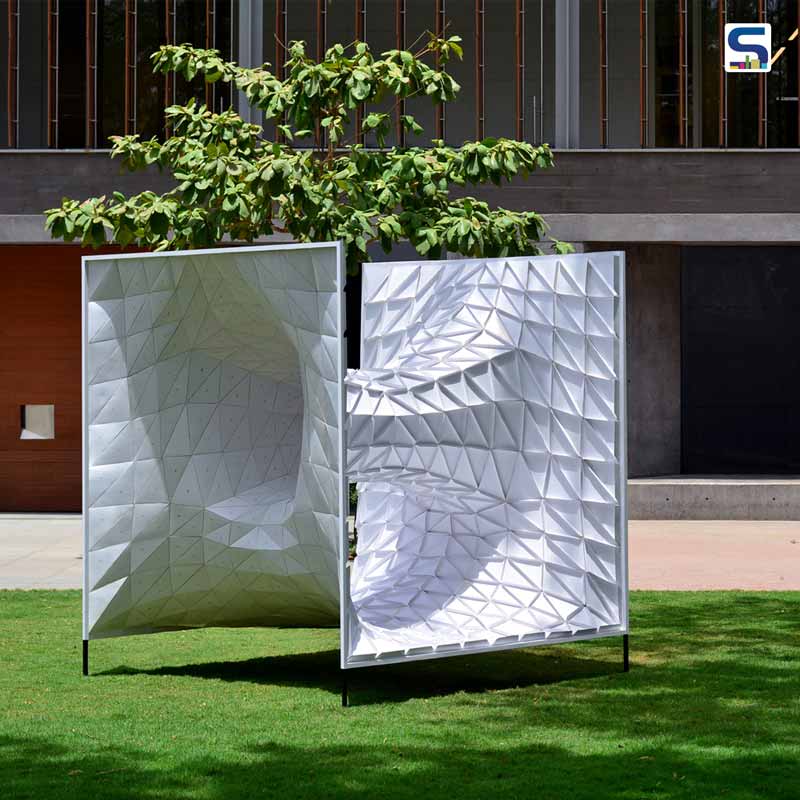
Delhi-based WEsearch Lab has designed a temporary wormhole shaped installation within a budget of 200 USD with 792 custom panels (triangles with flaps) of 300 gsm paper pulp sheets. The structure is located in a lawn in front of the Lilavati Lalbhai Library in the CEPT University campus in Ahmedabad, India. It is built as a demonstration to help the architectural practices in developing South-east Asian countries to push the ‘digital to physical’ boundary of complex double-curved surfaces, in spite of the lack of cheap advanced fabrication services. Read below SURFACES REPORTER (SR)’s entire post to know more about this installation:
Also Read: Ar Fahed Majeed creates pavillion with waste Bed Spring Coils
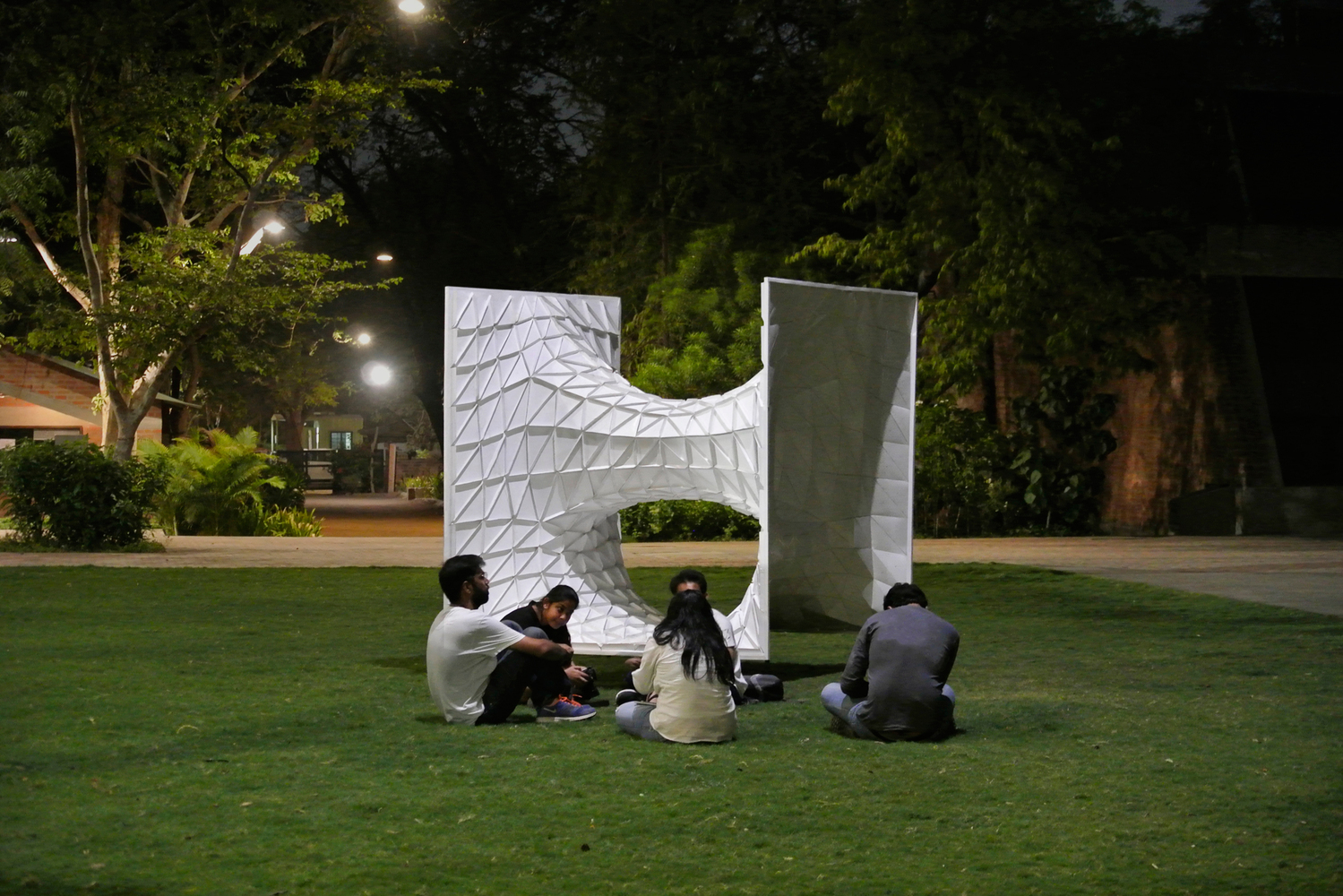
Developing South-east Asian countries typically do not have access to cheap or large scale 3-axial 3D printing, 5-axial robot assisted printing, double-curved metal bending and robot assisted assembly infrastructure. On the other hand, they have an abundance of cheap manual labour, and readily available and cheap planar fabrication techniques.
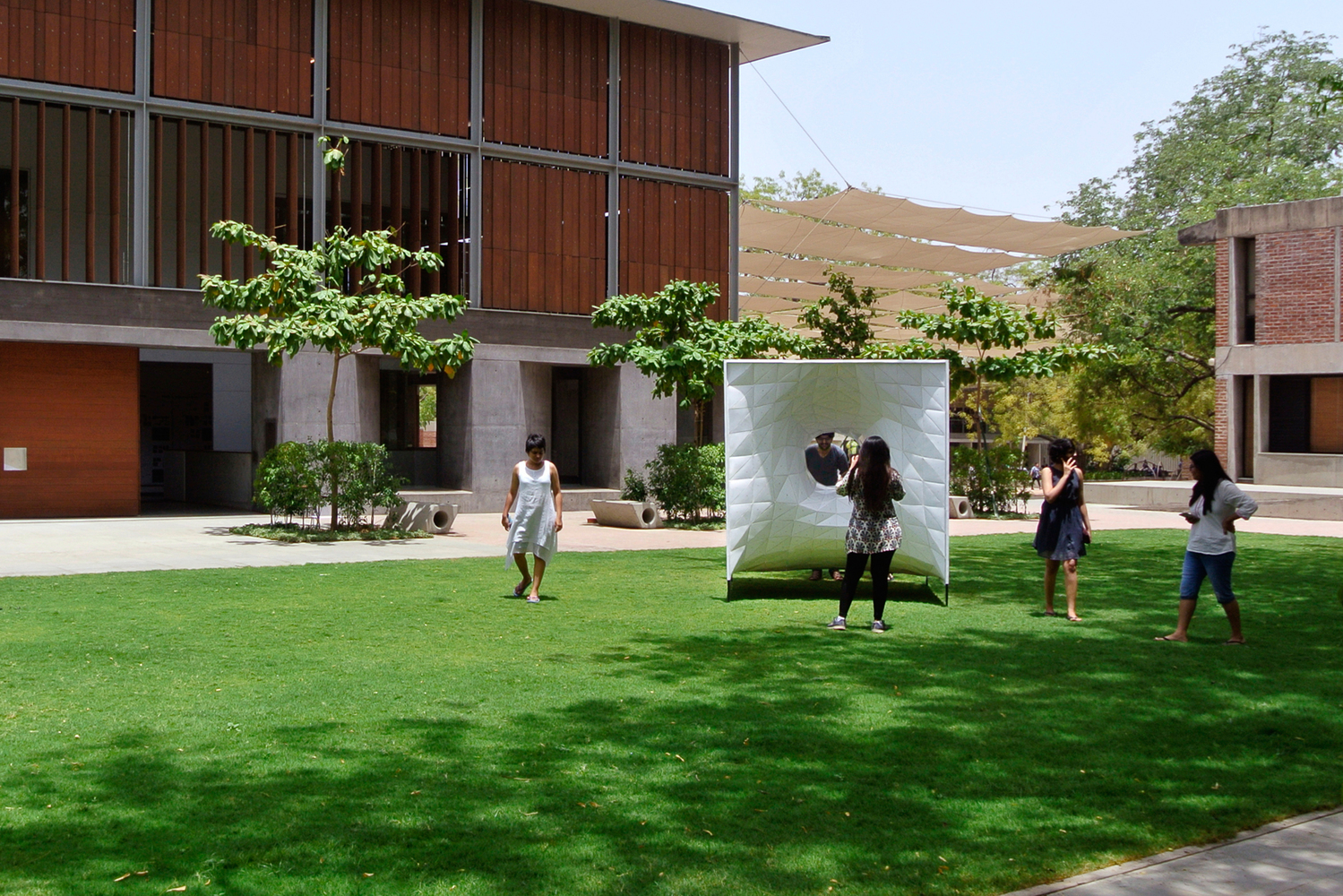
In such a scenario, to minimise inflation of cost, free-form surfaces need to be rationalised into planar parts which can be fabricated using laser cutting or CNC milling machine and subsequently assembled using manual labour.
Design Details
The installation is literally a wormhole shaped faceted skin circumscribed in a 2m x 2m x 2m cube. The paper pulp sheets are joined by 10mm wide fasteners and supported by a 15mm x 15mm x 1mm MS hollow section running along the periphery.
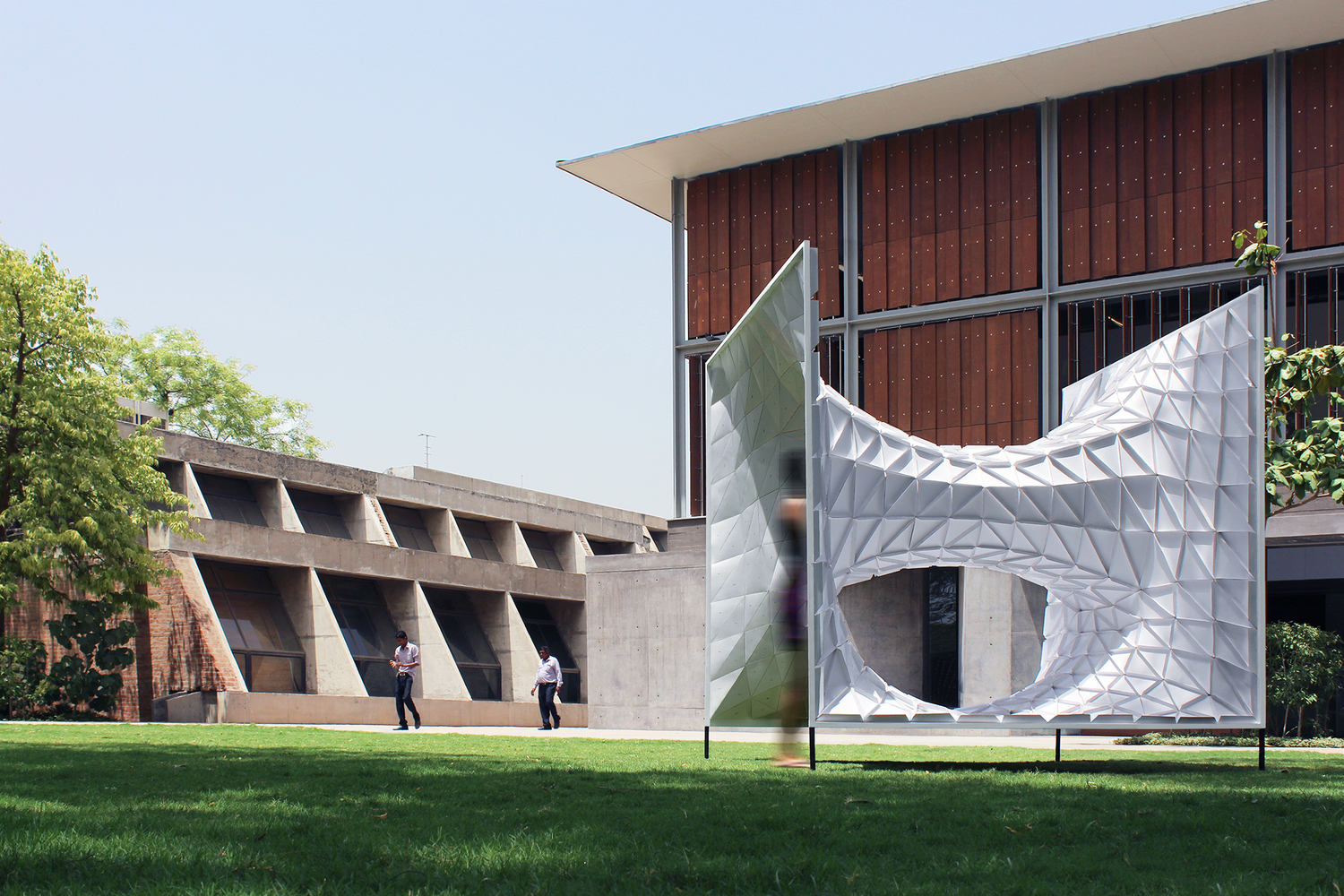
The facade of Lilavati Lalbhai Library is designed with strong horizontal and vertical lines. To visually respect the orthogonal lines, the bounding frame of the installation is designed in the shape of a cube.
Also Read: The Ellipsicoon Pavillion made with woven strands of 100% recyclable polyethylene
Inside the cubic bounding frame, the surface is designed with gradual introduction of double-curvature.
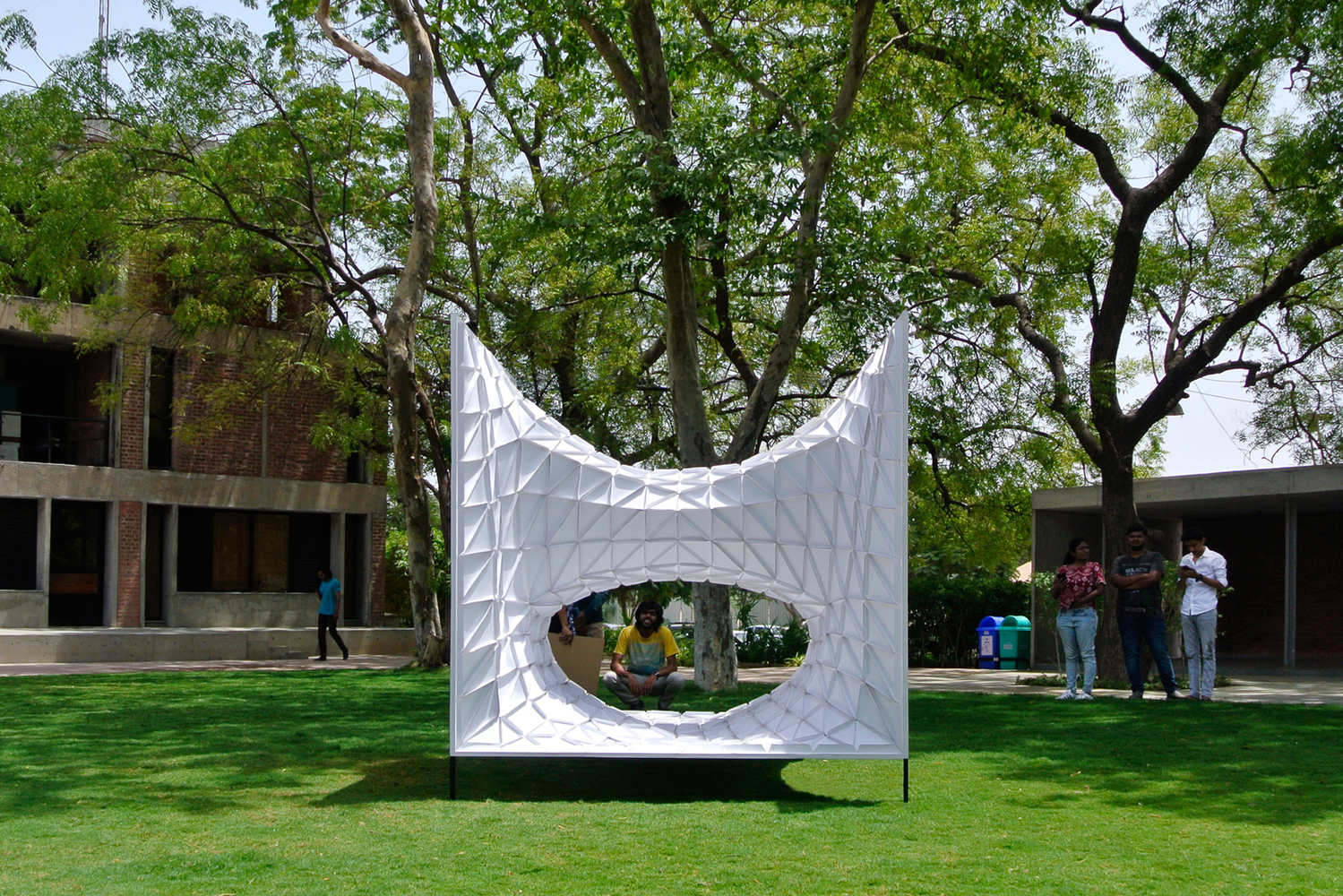
The surface exhibits self-referential bending in both directions to produce two tube-like holes. The shape of the surface strikes a balance between respecting the surrounding graphical lines and drawing attention of the passerby.
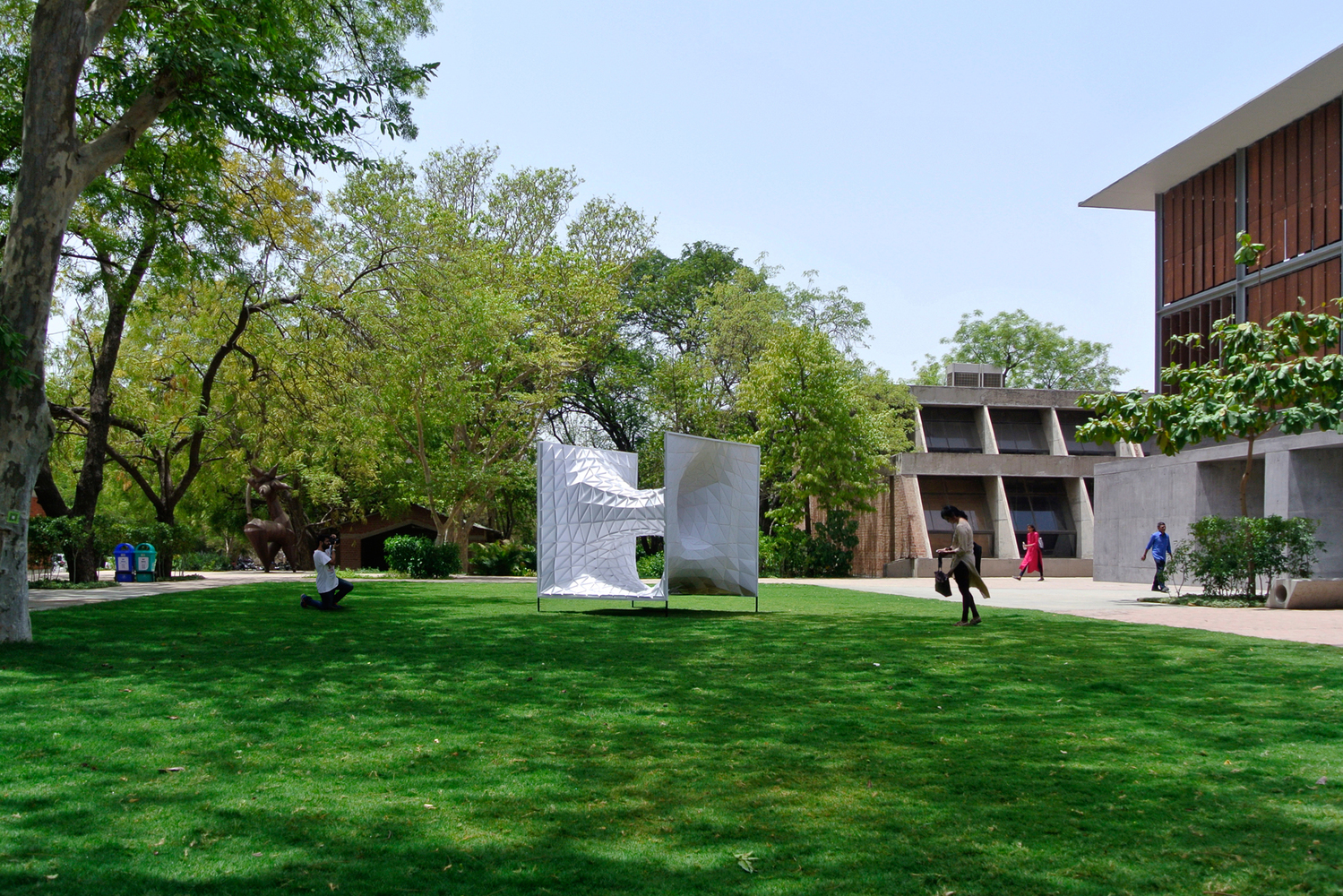
From a distance, the peripheral cube lines draw attention. On approach and close inspection, the curvature of the self-warped holes halts the eyes of an onlooker. The digital part of designing the shape of the surface had the following three steps –
- Geometric transformations in 3D modeling software to conceive the free-form surface,
- Rationalisation of the double-curved surface into triangular panels, and
- Generating fabrication drawing by flattening and numbering the triangular panels, and adding flaps for fastener connections.
The rationalisation of the double-curved surface into triangles is informed by the material properties of the 300 gsm paper pulp sheets. Given the self-weight of the sheets and the size of the installation, the maximum allowed length of a triangle edge is calculated to be 350mm.
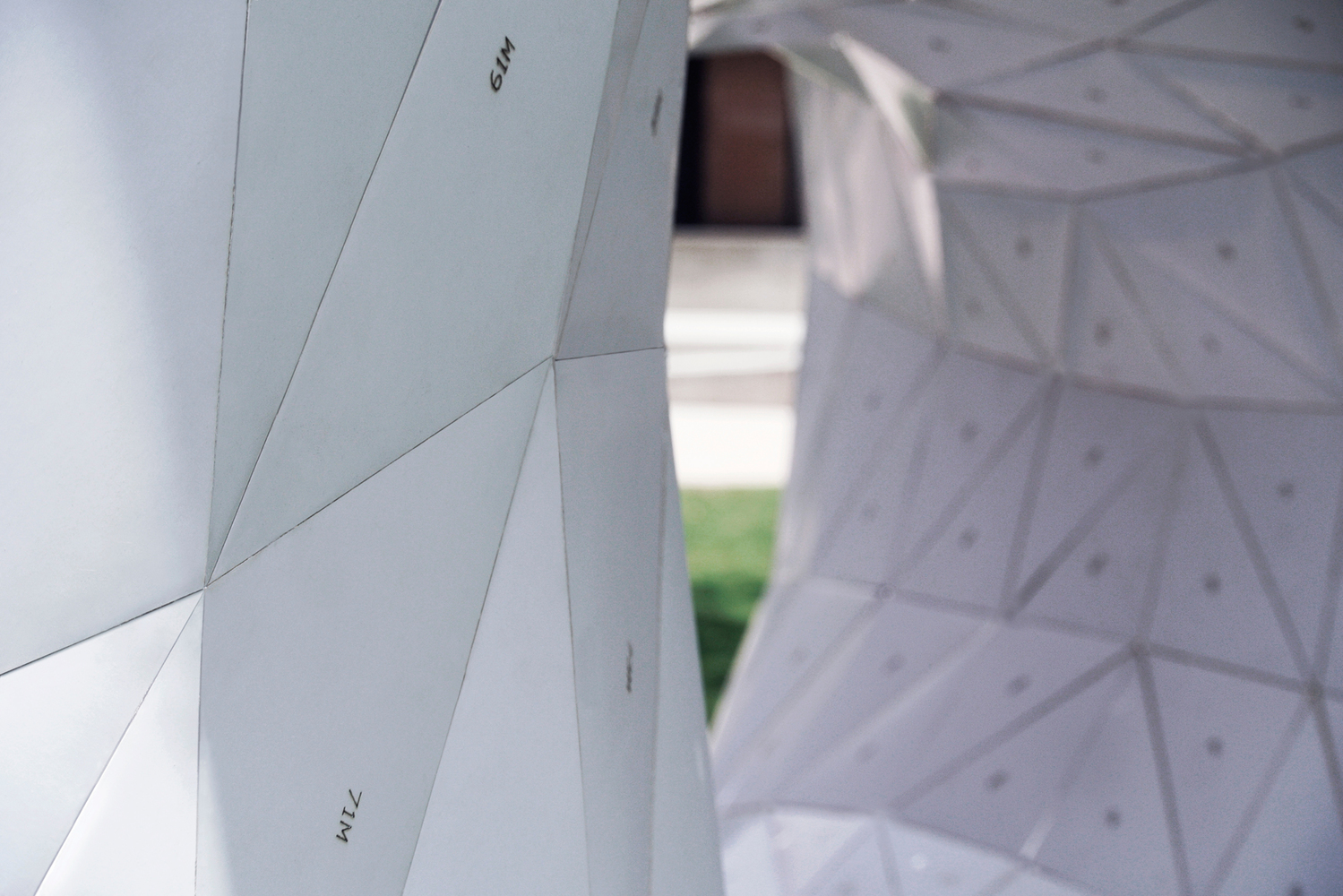
For ease of use of handheld devices, the minimum allowed length of a triangle edge is ascertained to be 100mm. Consequently, optimum density of triangulation with minimum number of triangle edges more than and less than the maximum and minimum permissible limits, respectively, is selected for fabrication. The physical part of the process to build the installation had the following three steps –
- Fabrication of the triangular panels with the flaps using a laser cut machine,
- Manual folding of the half-cut flaps of the triangular panels, and
- Manual assembly of the triangular panels according to their numbering.
Each quadrant of the installation is built with 198 triangular panels. The half-cut flaps are folded and fastened to each other using simple low-tech flap to flap alignment.
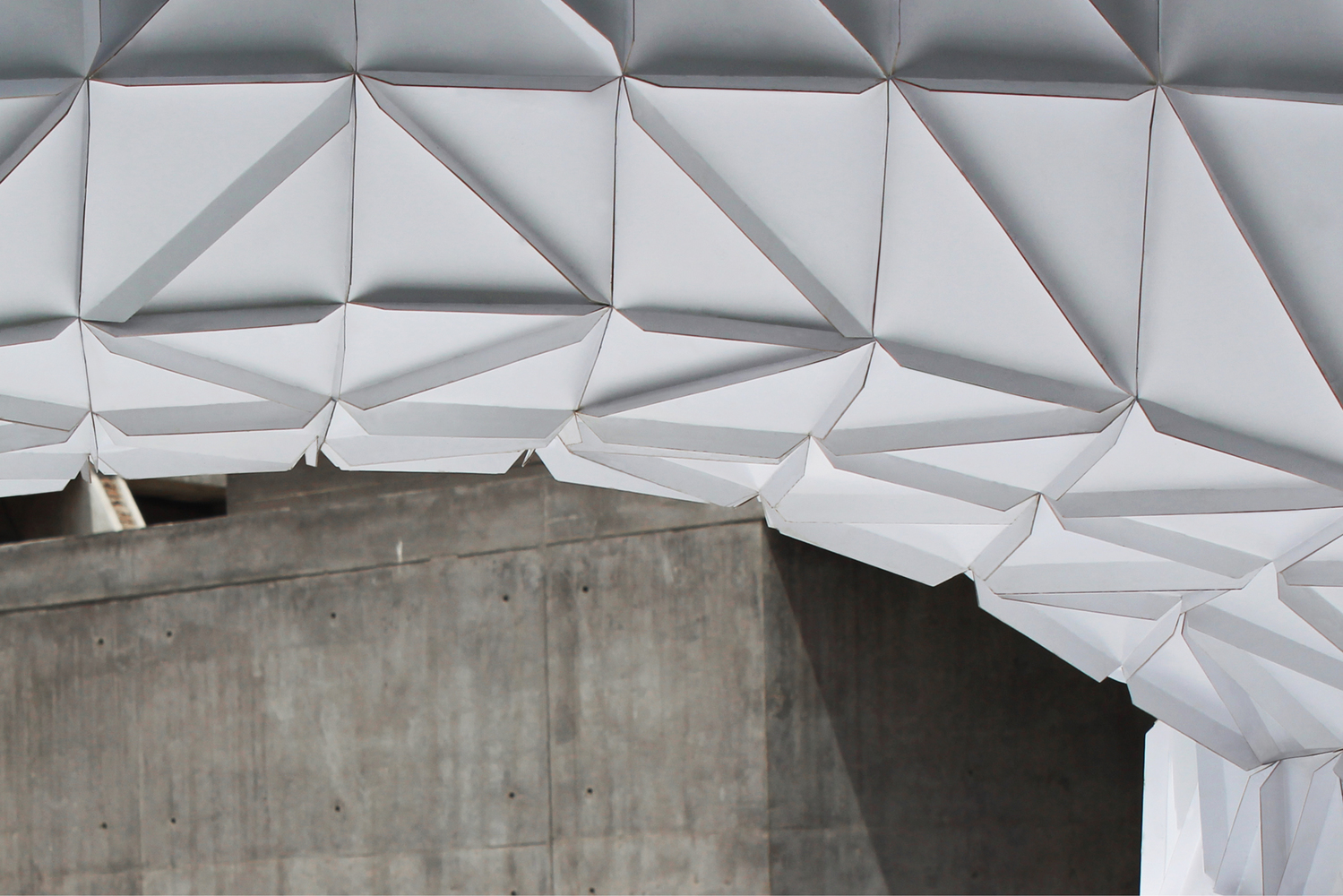
The triangles and flaps are numbered, which allows easy one-to-one assembly of the triangles.
When all the four quadrants are fastened to the peripheral metal frame, the skin loses its amorphous nature and becomes a rigid tensile structure.
The installation explores how the digital process of design and rationalisation preceding the construction can be calibrated to utilise labour intensive low-cost workflow of assembling laser cut discreet panels of the surface.
Diagrams:
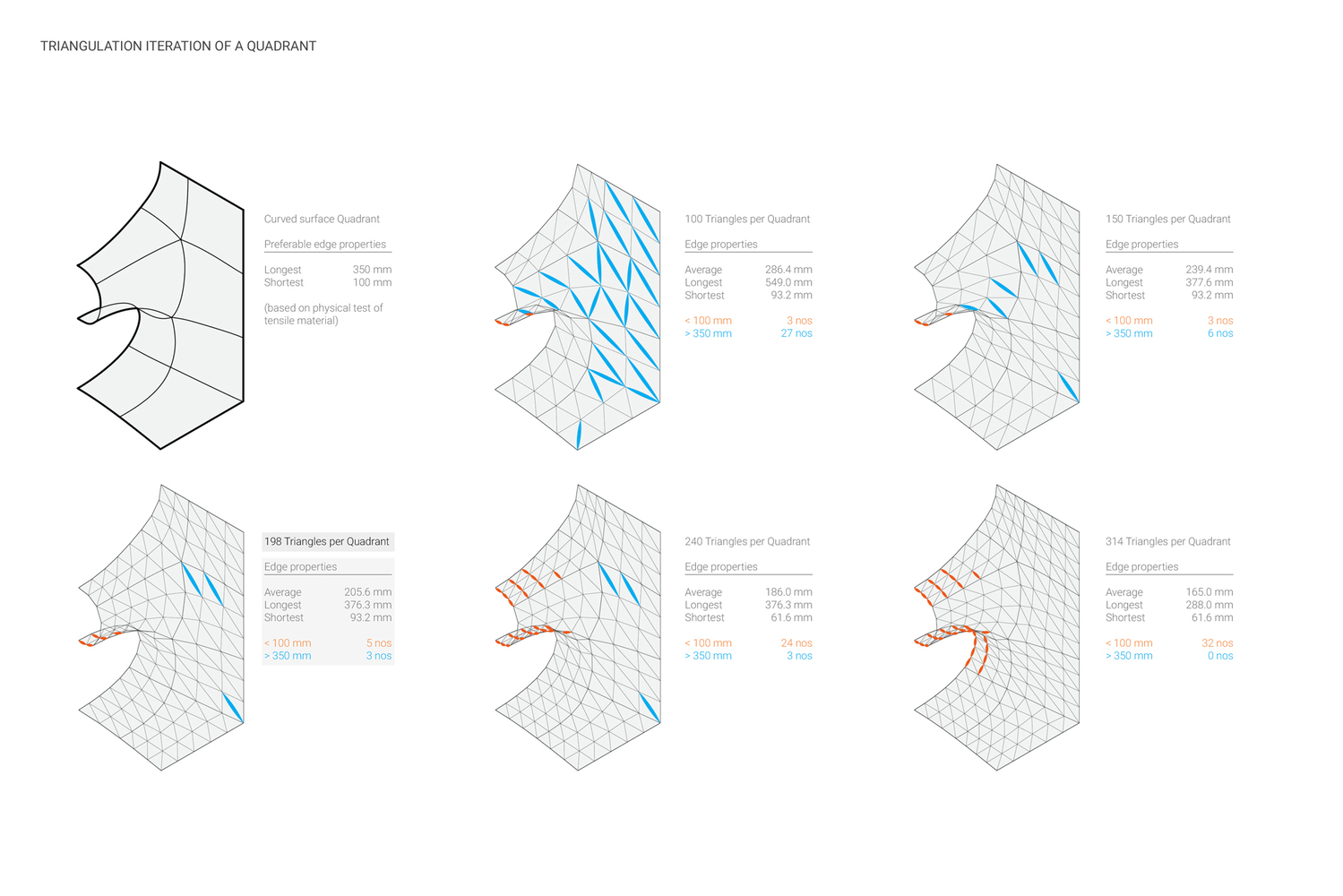
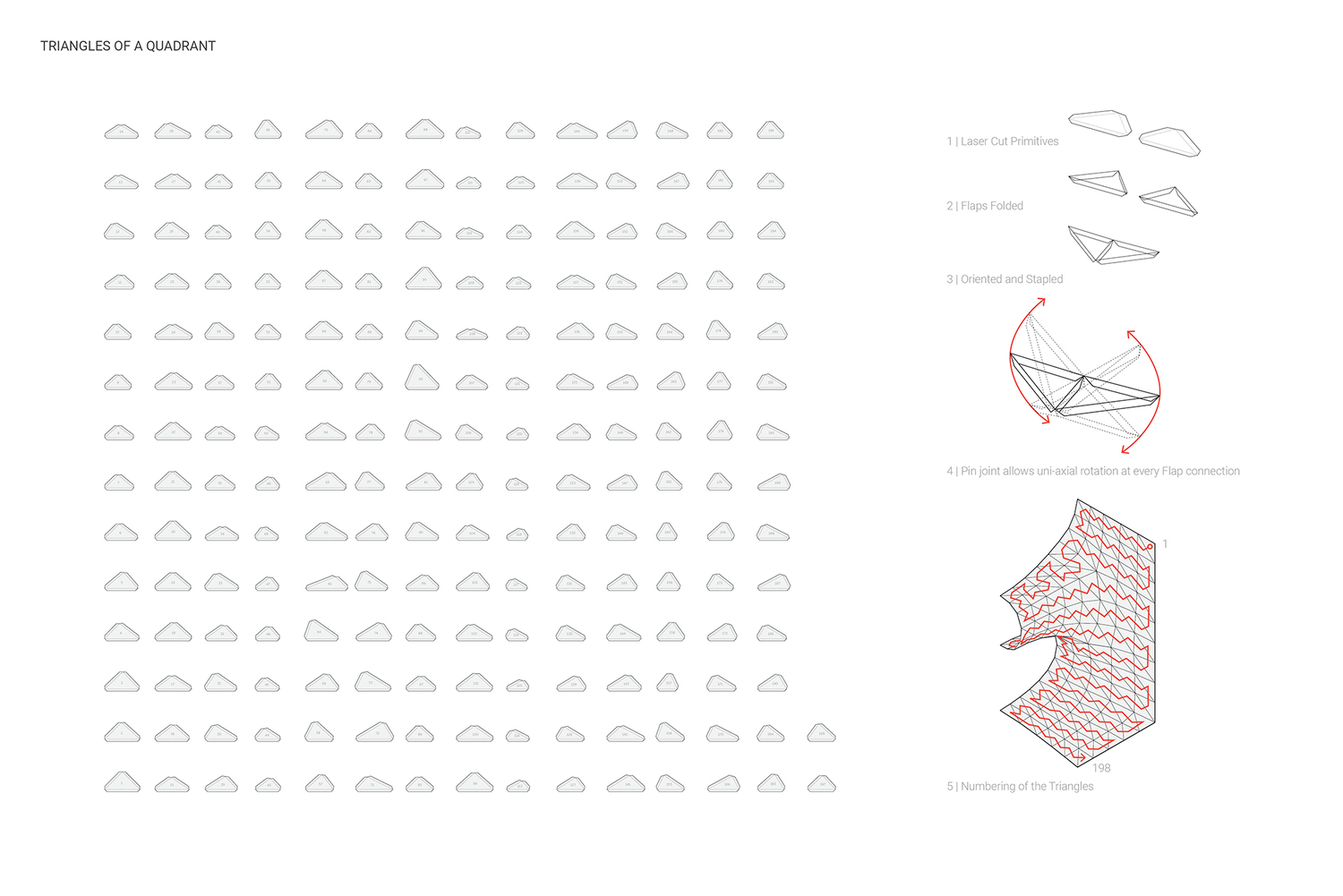
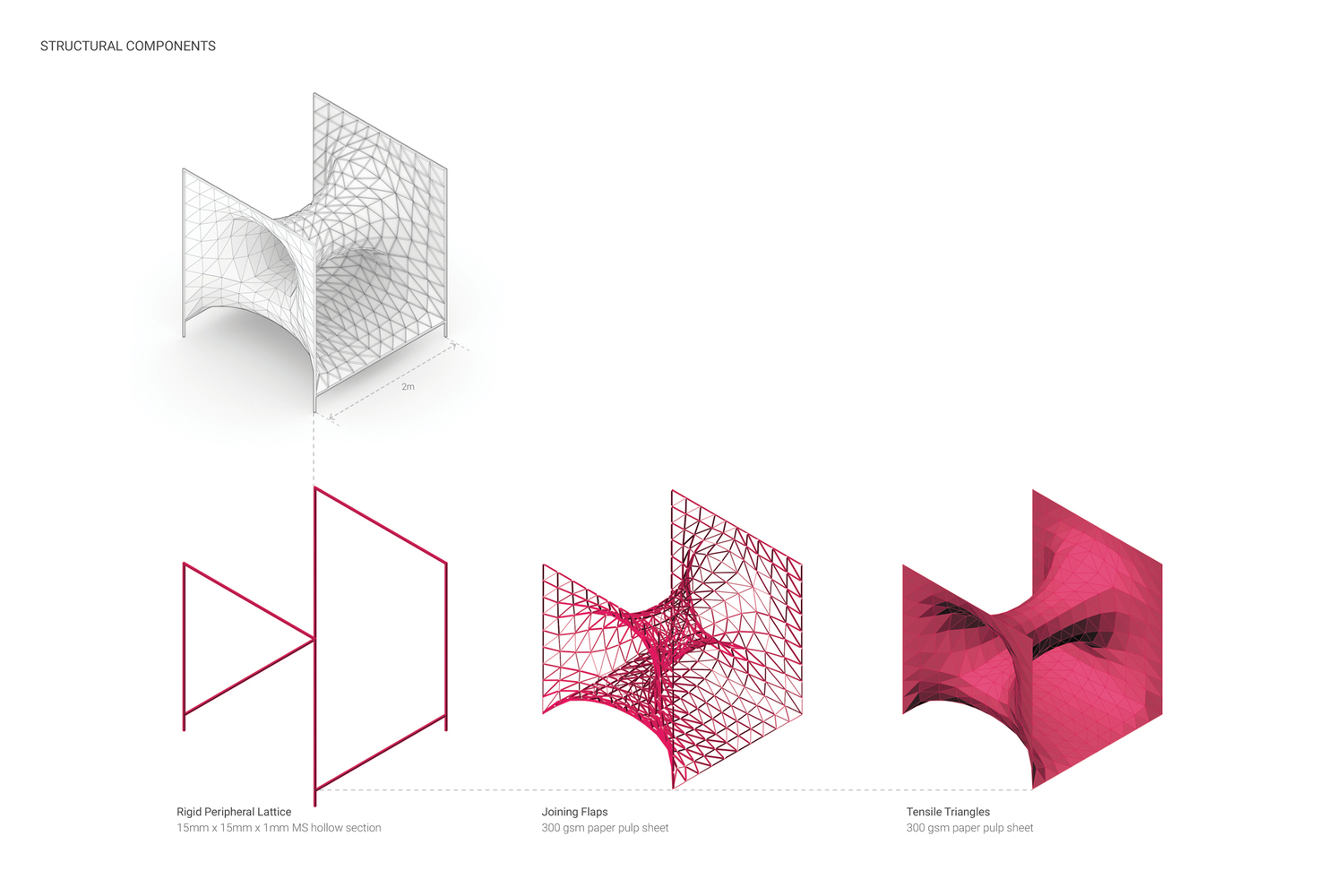
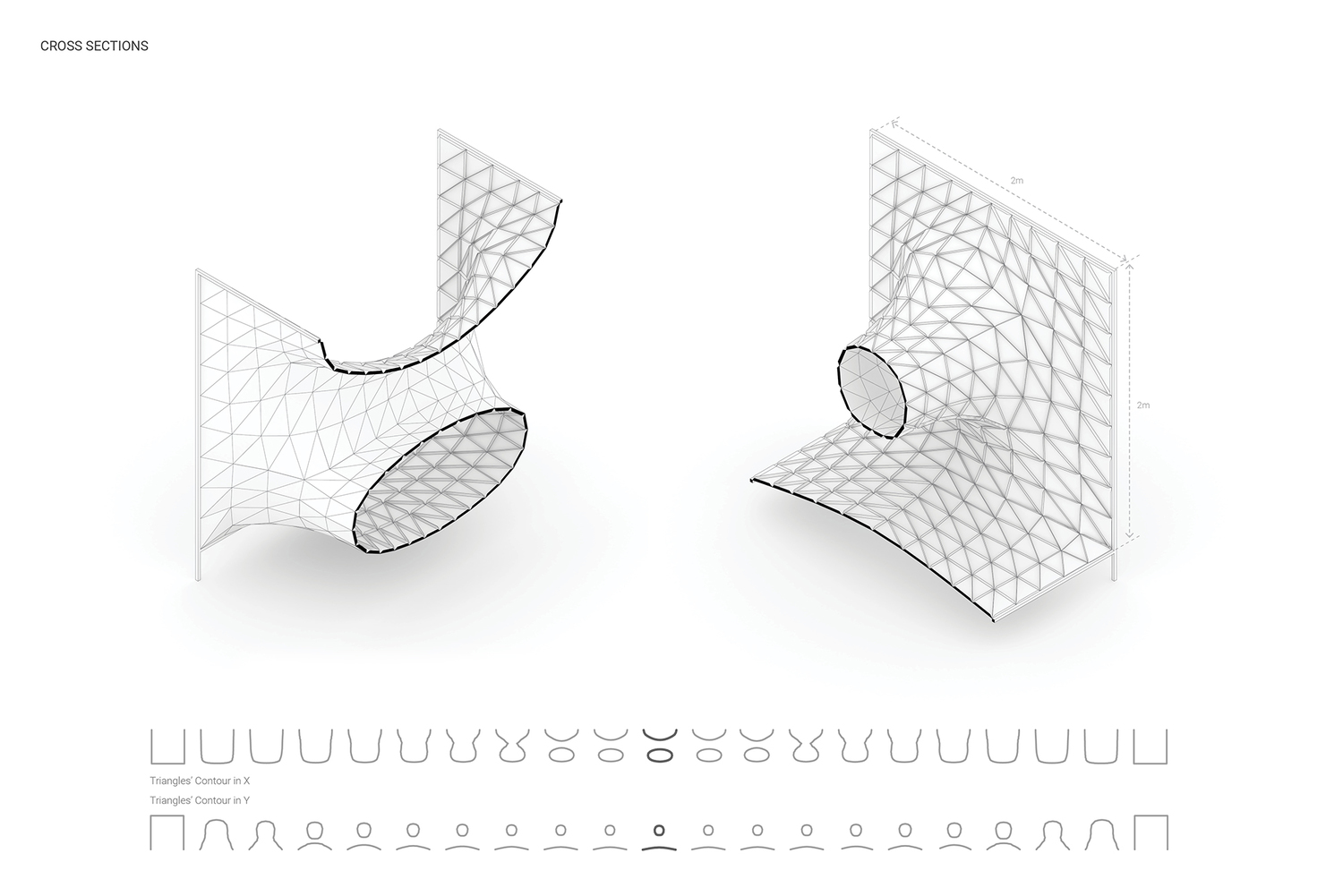
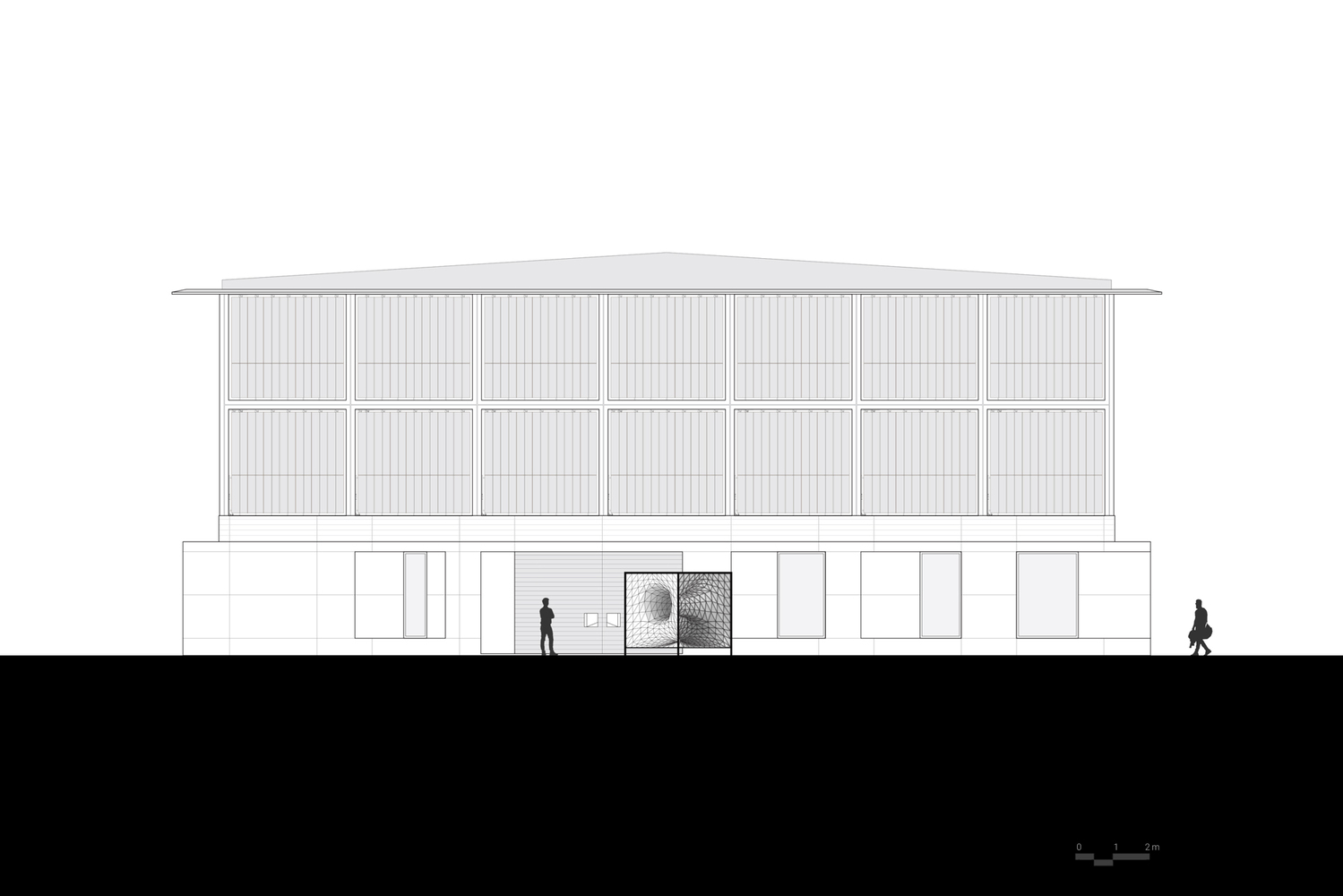
Project Details
Location : CEPT University, Ahmedabad, India
Principal Designer : Joy Mondal, WEsearch lab
Design-build Team : Joy Mondal, Aashini Sheth, Abhimanyu Setia, Aditi Ashish Kanodia, Archit Milind Kathale, Dhaval Sardhara, Kritika Bodkhe, Kumaresh Ghosh, Madhurima Kumar, Mit Vasant Patel, Palak Chokssi, Payal Vaswani, Priyankita Pant, Raj Rajeswari Sahoo, Salonee Nadkarni, Shashank Trivedi, Tunisha, Vipul Raj and Viral Mehta.
Installation Size : 2m x 2m x 2m
Cost : 200 USD or 14,000 INR
Material : 300 gsm paper pulp sheet for the triangular panels; 10mm wide fastener to join the triangular panels; 15mm x 15mm x 1mm MS hollow section for the periphery lattice.
Panels : 792 custom triangular panels with flaps
Photos : Joy Mondal, Abhimanyu Setia and Kumaresh Ghosh.
*The project description has been provided by WESearch Lab
Keep reading SURFACES REPORTER for more news on furniture, architecture and design.
Join us in SOCIAL MEDIA to stay updated
SR FACEBOOK | SR LINKEDIN | SR INSTAGRAM | SR YOUTUBE
Further, Subscribe to our magazine | Sign Up for the FREE Surfaces Reporter Magazine Newsletter
You may also like to read:
Edoardo Tresoldi: New Wire Mesh ‘Etherea’ Installation for ‘Back to Nature’ Exhibit | Rome
Transforming Installation that reflects fluidity of emotions | Ego by Studio Drift:
A Plywood Pavillion That Transforms Into 410 Furniture Pieces
and more...